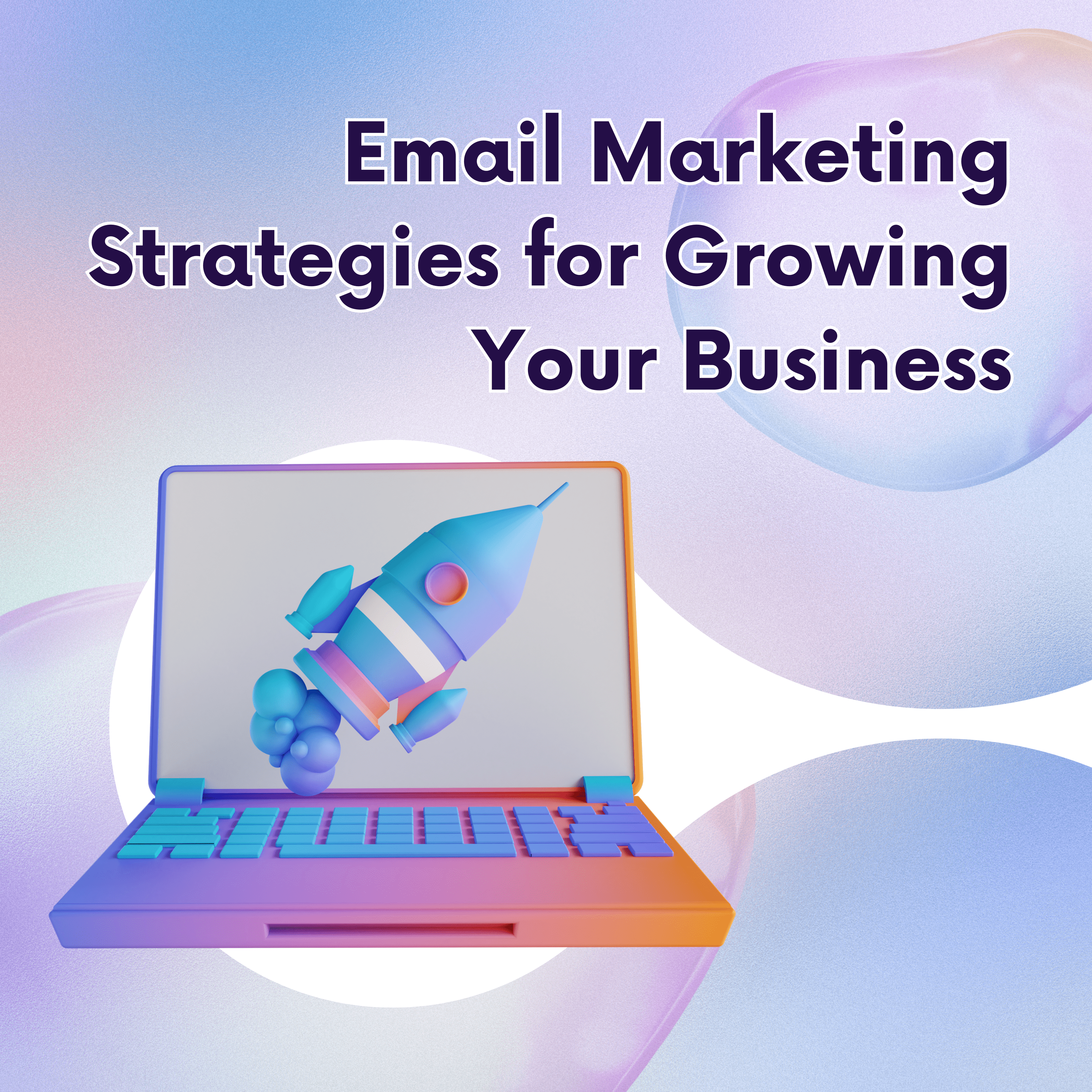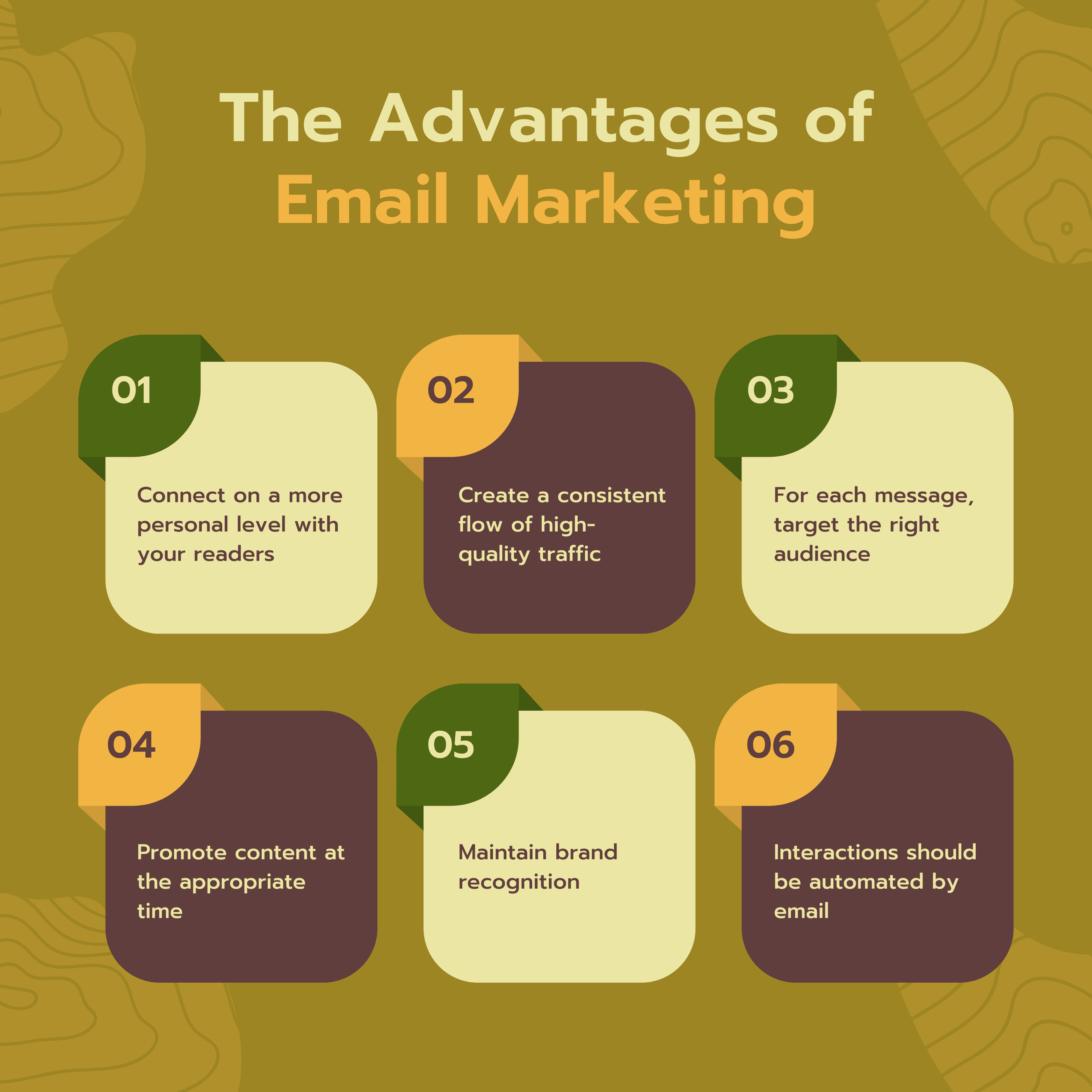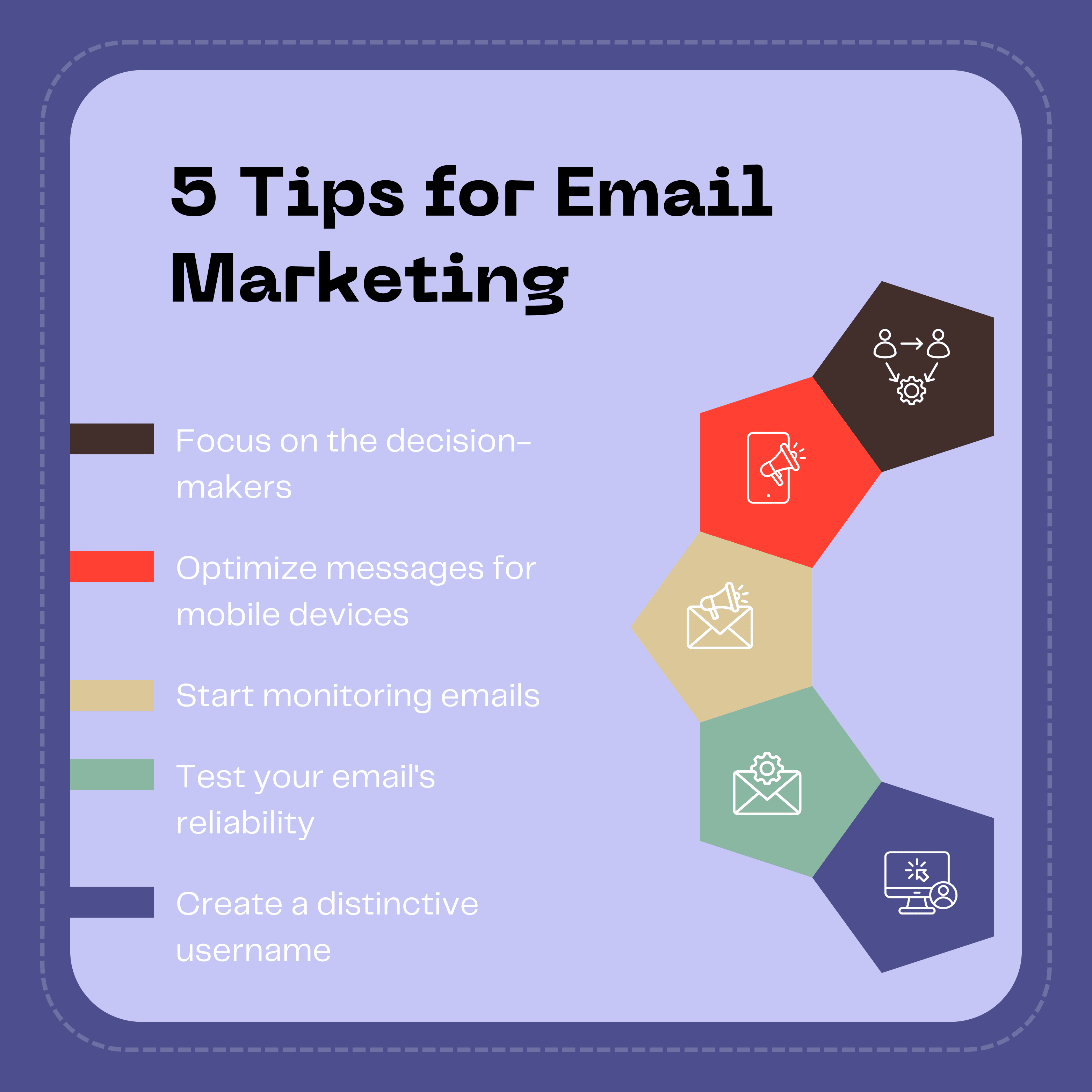Email Marketing: The Ultimate Guide to Growing Your Business

What is Email Marketing?
Email marketing is a digital marketing strategy that involves sending emails to a group of people with the purpose of promoting a brand, building customer relationships, and increasing sales.
It is a cost-effective and direct way to engage with your audience, keeping them informed about your latest products, services, and offers.
Unlike social media, where posts are often missed, emails land directly in a recipient’s inbox, making email marketing one of the most powerful tools for business growth.
Types of Email Marketing
Email marketing can be categorized into various types, each serving a specific purpose. Here are the most common ones:
1. Promotional Emails
Used to promote special offers, discounts, product launches, or upcoming sales. These emails aim to drive sales and conversions.
Example: “Get 20% Off on Your Next Purchase – Limited Time Offer!”
2. Transactional Emails
Sent automatically after a user takes an action, such as placing an order or signing up. They provide essential information and build trust.
Example: Order confirmation, shipping updates, or password reset emails.
3. Welcome Emails
Sent when someone new signs up on your email list.. They introduce your brand, set expectations, and often include a special offer.
Example: “Welcome to Our Community – Here’s a Special Gift for You!”
4. Drip Campaign Emails
A series of automated emails sent over time to nurture leads, educate users, or onboard new customers.
Example: A step-by-step guide on how to use a new software product.
5. Newsletters
Regularly scheduled emails that provide updates, industry news, or educational content to keep subscribers engaged.
Example: A weekly newsletter with blog updates, marketing trends, and company news.
6. Re-engagement Emails
Sent to inactive subscribers to bring them back by offering exclusive deals, reminding them of their previous activity, or asking for feedback.
Example: “We Miss You! Here’s 10% Off to Welcome You Back.”
7. Survey and Feedback Emails
Used to collect customer opinions and improve services by asking for reviews or survey responses.
Example: “Tell Us How We’re Doing – Your Feedback Matters!”
8. Seasonal or Holiday Emails
Designed around special occasions like New Year, Christmas, or Black Friday to boost engagement and sales.
Example: “Exclusive Christmas Deals Just for You!”
9. Lead Nurturing Emails
Aimed at guiding potential customers through the sales funnel by providing valuable content and offers based on their behavior.
Example: Sending a free eBook to someone who signed up for a webinar.
Each type of email marketing serves a different purpose but contributes to building strong customer relationships and increasing sales.
Why is Email Marketing Important?
Email marketing is one of the most powerful digital marketing strategies, offering businesses a direct, cost-effective, and high-converting way to communicate with their audience. Here’s why it is essential for businesses:
1. Direct and Personalized Communication
Unlike social media, where messages can be lost in a crowded feed, emails reach the recipient’s inbox directly. Personalization allows businesses to send targeted content based on user preferences, behavior, and demographics.
2. High Return on Investment (ROI)
In digital marketing, email marketing yields one of the highest returns on investment. According to studies, businesses can earn up to $42 for every $1 spent on this marketing. This makes it a highly profitable marketing strategy.
3. Cost-Effective Marketing Strategy
Compared to paid ads, billboards, or traditional marketing methods, this marketing is affordable and requires minimal investment. Businesses can reach thousands of customers without spending a fortune.
4. Helps Build Customer Relationships
Consistent email communication keeps your audience engaged. Sending newsletters, updates, and exclusive offers helps build trust and loyalty among customers.
5. Drives Website Traffic
Emails encourage recipients to visit your website through strategically placed links, offers, and calls to action (CTAs). This increases website traffic and improves search engine rankings.
6. Increases Conversions and Sales
With targeted offers and persuasive copy, this marketing boosts sales by encouraging users to take action. Limited-time offers, discounts, and product recommendations lead to higher conversion rates.
7. Automated and Scalable
Email marketing allows automation, enabling businesses to send drip campaigns, welcome emails, and follow-ups without manual effort. This saves time and ensures timely engagement.
8. Measurable Results
This marketing platforms provide analytics, allowing businesses to track open rates, click-through rates (CTR), and conversions. These insights help in optimizing future campaigns for better performance.
9. Helps Retarget Inactive Customers
Re-engagement emails help businesses reconnect with customers who haven’t interacted for a while, bringing them back with exclusive offers or personalized messages.
10. Works Well for All Businesses
From startups to large enterprises, this marketing is beneficial for all industries, including eCommerce, B2B, healthcare, and education, making it a versatile marketing tool.

Benefits of Email Marketing
How to Do Email Marketing?
1. Build an Email List
Use lead magnets such as free eBooks, discounts, or exclusive content to encourage sign-ups.
2. Choose an Platform
Platforms like Mailchimp, ConvertKit, or ActiveCampaign help manage and automate email campaigns.
3. Segment Your Audience
Divide your email list into categories based on interests, behavior, or demographics.
4. Create Engaging Content
Write compelling subject lines and email content that resonates with your audience.
5. Automate Email Campaigns
Set up automated workflows for welcome emails, drip campaigns, and follow-ups.
6. Monitor and Optimize
Use analytics tools to track email performance and make necessary adjustments.
How to Write a Marketing Email?

Strategies for Success
Email marketing is a powerful and cost-effective strategy that allows businesses to engage with their audience, build lasting relationships, and drive sales. With its ability to deliver personalized messages directly to customers’ inboxes, it remains one of the most effective digital marketing channels.
By understanding different types of email marketing, leveraging automation, and following best practices, businesses can maximize their success. Whether you’re a small business or a large enterprise, a well-planned marketing strategy can boost conversions, increase customer retention, and enhance brand loyalty.
Start implementing email marketing today and watch your business grow with targeted, engaging, and value-driven emails!
